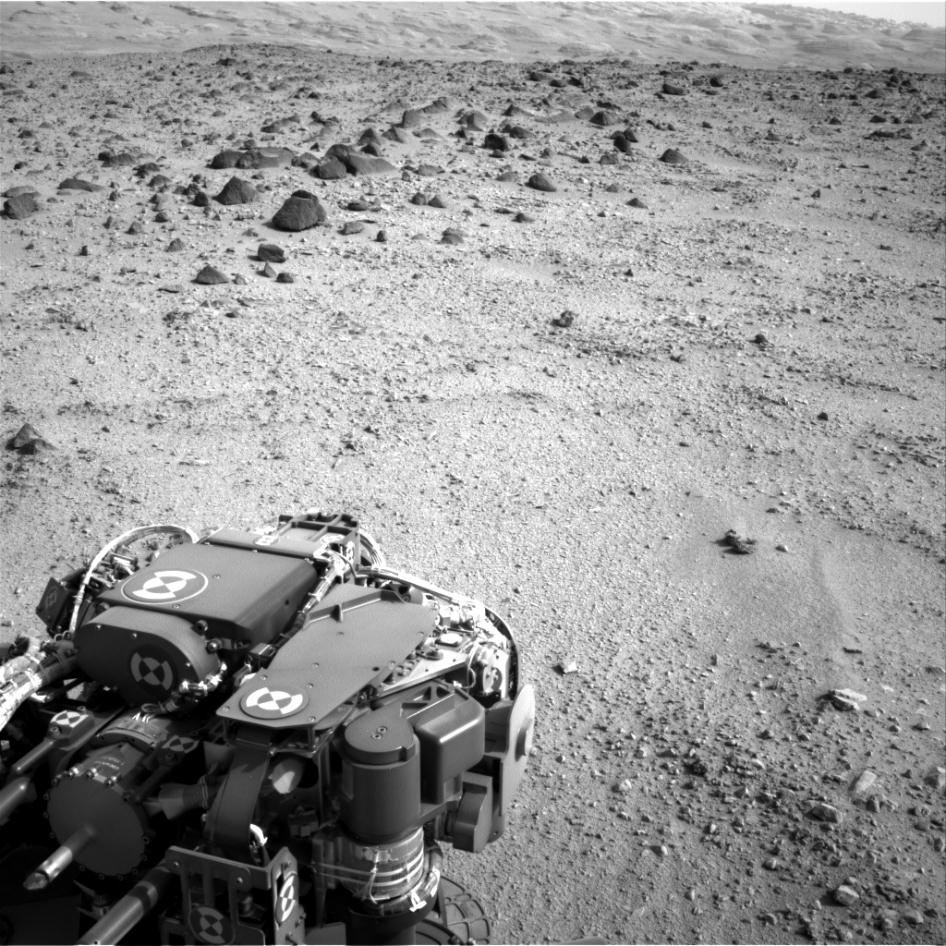As the Martian crow flies, the Curiosity rover has about 8 kilometers (5 miles) to trek until it reaches its science destination of the foothills of Mount Sharp. But there will likely be twists and turns along the way. There could be boulders, pits and sand traps to avoid, as well as enticing science targets to stop and study. Just how will the rover be driven all that way? Are rover drivers "hand-driving" every turn or will Curiosity use its autonomous driving software? A combination of both, says Jeff Biesiadecki, MSL Rover Planner and flight software developer. In the Rover Update video below, he explains how each day's drive will be planned and executed. The rover team is hoping to make at least 100 meters every day.
The image above shows the lower slopes of Mount Sharp at the end of a drive of about 135 feet (41 meters) during the 329th Martian day, or sol, of the rover's work on Mars (July 9, 2013). That was the third drive by Curiosity since finishing observations at the mission's final science target in the "Glenelg" area east of the rover's landing site. Curiosity is driving to the southwest as it heads to Mt. Sharp.
How long will the drive to Mt. Sharp (Aeolis Mons) take? The MSL team expects it will take nine months to a year with stops for science.
"The mission is discovery driven," said John Grotznger, who leads the MSL mission. "We will go to where the science takes us."
Read more details about the drive in our recent article by Ken Kremer.
 Universe Today
Universe Today
